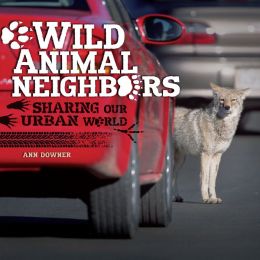
978-076-139-0213
It is no secret that, as man takes over more and more land, wildlife is running out of places to go. Living on the edge of National Forest land, we see more than our share - the mountain lion that occasionally streaks across the road in front of our car, the bear that tried really hard to squeeze through the pantry window, the raccoons that got into the dog food bin, the elk and deer that drive the chocolate lab crazy (to be fair, she also barks at leaves), the chipmunk that lives under the boys' room and stuffs itself from the compost heap. For the most part, we live harmoniously, with minor adjustments like moving the dog food to the pantry, and securing that window.
One of Daddy's many jobs, however, is removing animals from places where there is a bit less harmony. Since the humans pay more than the critters, it is usually the latter who get relocated! Sometimes people contact him directly, sometimes through Game and Fish. In the cases of skunks or raccoons, he can usually trap the problem critters quickly, and give some tips to keep their relatives from returning. Sometimes, though, people aren't happy with the answers they get. If a bear is getting into your trash can, Game and Fish personnel are not going to come out and trap the bear; they are going to tell you to move your trash can. (So will Daddy, so don't ask).
Wild Animal Neighbors gives readers an overview of the different types of wildlife that are increasingly making their homes in urban areas. Some are more successful than others at blending in and living harmoniously with humans. In some cases, this is due to the animals' ingenuity or stubbornness, in others it is with the help of humans willing to find ways to coexist.
Each chapter looks at animals in a different part of the world, from crows in Japan to alligators in Texas. Side bars give information about each animal species, animal tracks wander across the pages, and photographs and additional information are peppered throughout. This can make the pages seem a bit busy, but for the most part the information is easily accessible and understandable.
Overall, a good introduction to the subject, and a possible jumping-off point for classroom projects. This would also be a good Christmas gift for a young nature lover, possibly paired with a stuffed animal, or a gift sponsorship of an endangered species, such as those available from the World Wildlife Fund, or your local zoo. Published just last month.
Thank-you to Lerner Books for the review copy!
For more fun nonfiction, hop over to the new official Nonfiction Monday blog.

Make sure you add it to your favorites and/or newsfeed - instead of hopping around, from now on you can get all your posts in one spot, but still have links to check out other fun blogs!
For more fun nonfiction, hop over to the new official Nonfiction Monday blog.

Make sure you add it to your favorites and/or newsfeed - instead of hopping around, from now on you can get all your posts in one spot, but still have links to check out other fun blogs!
No comments:
Post a Comment